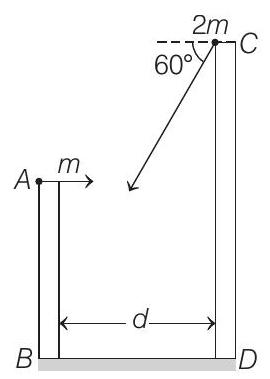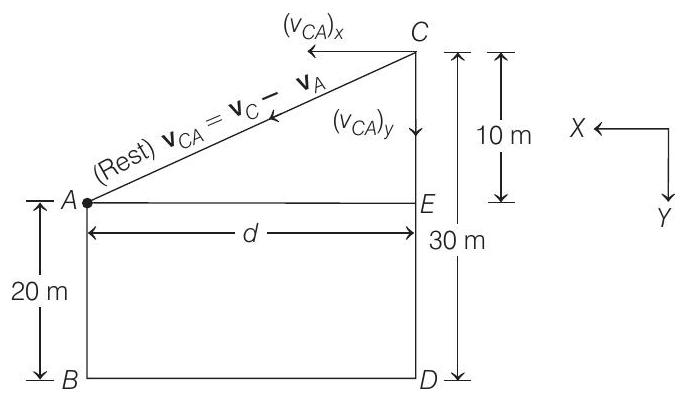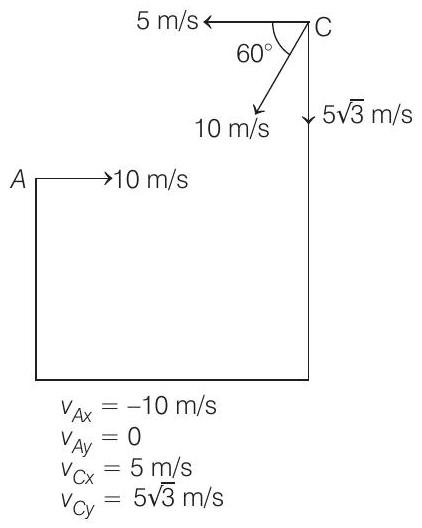Kinematics 5 Question 18
17. Two towers
Simultaneously, another object of mass

(a) Calculate the distance
(b) Find the position where the objects hit the ground.
Show Answer
Answer:
Correct Answer: 17. (a) Approximately
(b)
Solution:
- (a) Acceleration of

Now, assuming

(b) Time of collision,
Horizontal (or
Similarly,
Since,
i.e.

Hence, the combined mass will fall at point
Here
Therefore, position from






